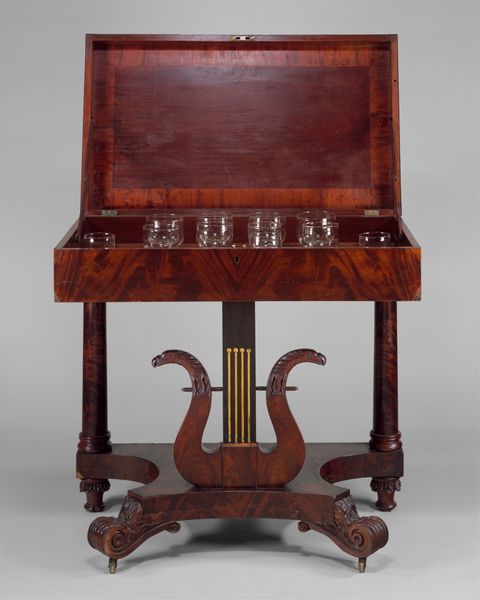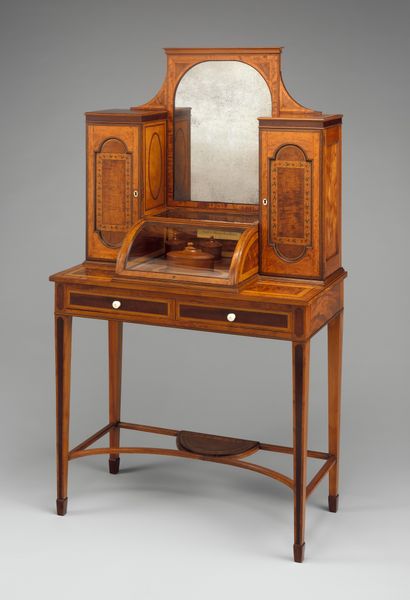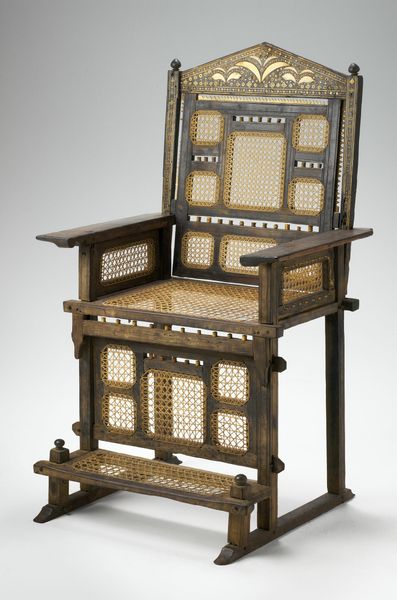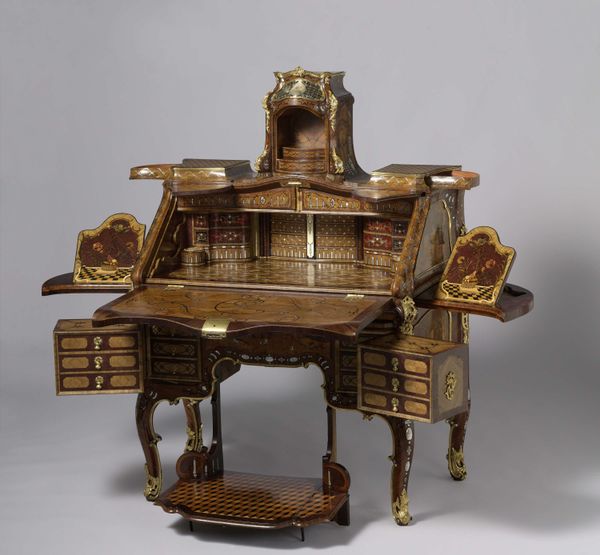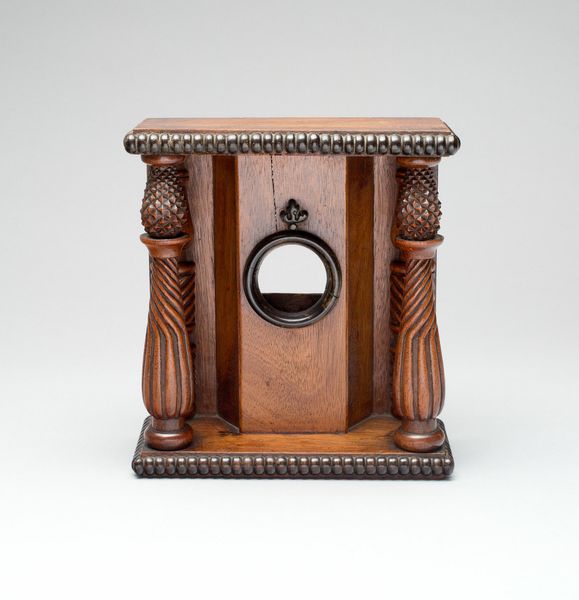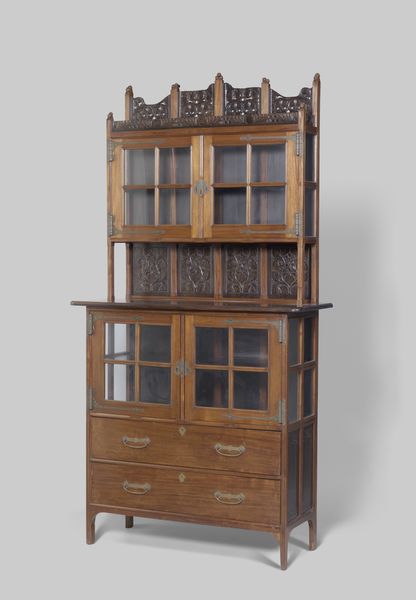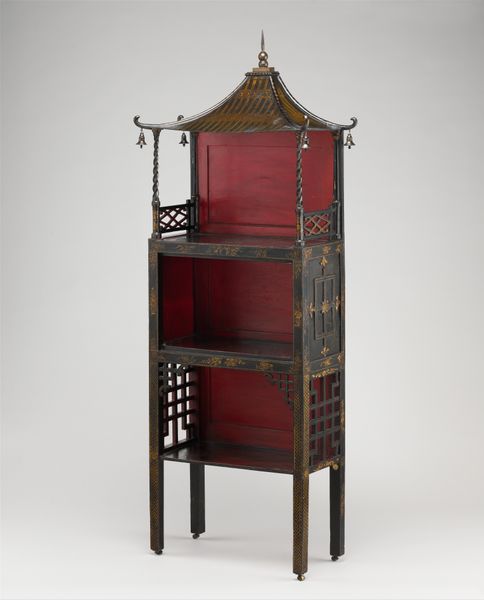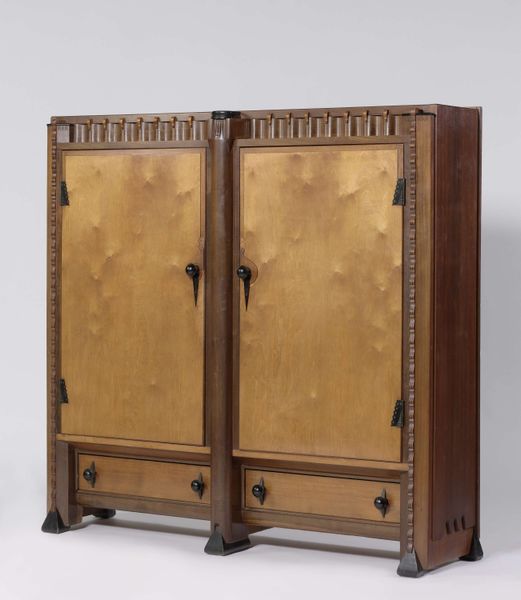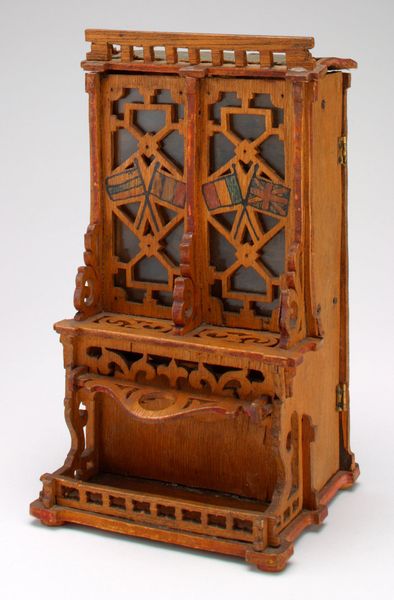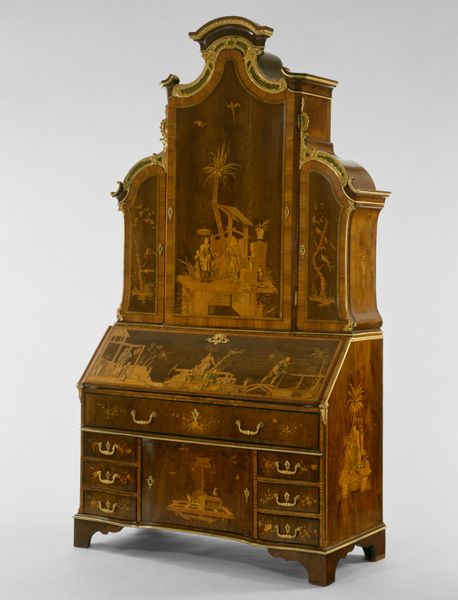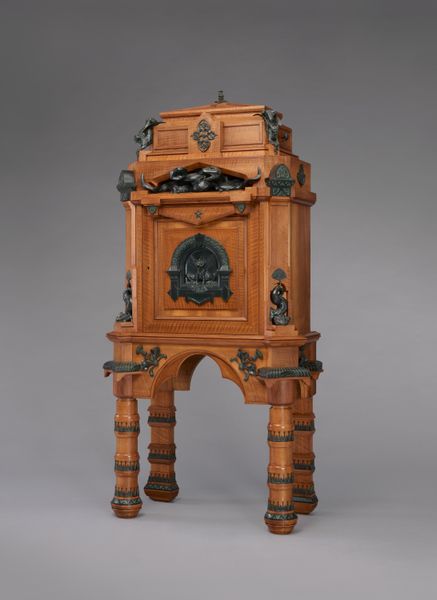
#
3d model
#
virtual 3d design
#
architecture mock-up
#
product showcase
#
architectural render
#
architecture model
#
3d modeling
#
united-states
#
neutral brown palette
#
cardboard
#
architecture render
Dimensions: 76 7/8 x 60 x 12 in. (195.3 x 152.4 x 30.5 cm)
Copyright: Public Domain
Curator: It's quite imposing, isn't it? So vertical and ornamented. Editor: Definitely commands attention. What exactly are we looking at? Curator: This is a "Cabinet" created by Herter Brothers, dating roughly from 1879 to 1882. We are looking at it here at The Met. It is primarily made of wood, though the composition looks quite varied. Editor: The first thing I notice is this sort of Chinoiserie effect – these flattened decorative patterns, along with the asymmetry, but contained within a very Western architectural form. I would be curious to examine how immigrant labor contributed to crafting those detailed carvings at the bottom of the cabinet, particularly the stories represented there, and if this cabinet might also represent cultural appropriation. Curator: Exactly. Herter Brothers were known for employing a wide range of artisans. Considering the period, mass production played an important part in furniture construction as cabinetmakers began incorporating techniques for efficiency. The type of wood and its preparation – how it's treated and finished – speaks to a culture of industrial advancements. What about the construction itself? Editor: I find myself dwelling on its function as a repository, really—what kind of status or class assumptions are baked into its presence in the home, promising a space for display and perhaps hiding away prized objects? What does that say about consumerism at that moment, what objects were worth hiding? Curator: The client was often from the burgeoning wealthy classes—families who wanted to show their taste and worldliness. The materiality speaks to luxury, doesn’t it? Not just in terms of expensive woods but in the level of craft involved and how labor and material intertwined in its construction. The whole piece has been cleverly constructed. Editor: It serves as such a clear encapsulation of Gilded Age anxieties, where anxieties about labor and social progress mix with this explosion of material desires, manifested in the cultural object. Curator: It presents, quite beautifully I think, the complex relations of that time. Editor: Exactly— it presents these themes, asking us to continue examining their construction and impact.
Comments
No comments
Be the first to comment and join the conversation on the ultimate creative platform.
